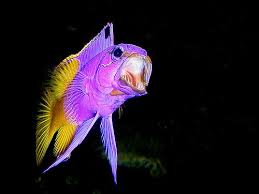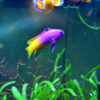The Dragon in Imperial Court Decorative Artworks of China: A Symbol of Power, Prestige, and Cosmic Harmony

The dragon, a symbol deeply ingrained in Chinese culture, is renowned for its mysticism, grandeur, and significance in various aspects of Chinese society, particularly in the imperial court. Revered as a celestial creature, the dragon symbolizes the emperor’s power, divine rule, and harmony between heaven and earth. Throughout the vast expanse of Chinese history, emperors, courtiers, and artists have utilized the image of the dragon as a means to express imperial authority and to evoke the balance of cosmic forces. As a result, the dragon has become one of the most dominant motifs in imperial Chinese art.
The intricate depiction of dragons in decorative artworks found within imperial palaces, royal chambers, ceremonial objects, and official regalia is a testament to the significance of this mythical creature. In this article, we will explore the role of the dragon in imperial court decorative art, its symbolic meanings, and the ways in which it reflects the grandeur of Chinese civilization and the divine mandate of the emperor.
The Historical and Symbolic Role of the Dragon in Chinese Culture
The dragon has played a central role in Chinese mythology, art, and cosmology for millennia. Unlike the terrifying, destructive dragons of Western lore, the Chinese dragon is benevolent, wise, and revered for its ability to control the forces of nature, especially water, rain, and wind. The dragon is associated with both the heavenly realm and the earthly realm, making it an ideal symbol for the emperor, who was seen as the intermediary between the two.
In ancient China, the emperor was considered the Son of Heaven, a divine figure who governed over all aspects of life. As such, the emperor’s power was closely tied to cosmic order. The dragon embodied this order, as it represented the harmonious relationship between heaven, earth, and humankind. It was believed that the emperor’s rule ensured the stability and balance of the universe, much like the dragon, which was thought to possess the ability to maintain harmony in the natural world.
The dragon is also associated with the Five Elements (wood, fire, earth, metal, and water), with a particular affinity for water. Water’s vital role in agriculture and the prosperity of the empire further elevated the dragon’s significance. As a symbol of life-sustaining forces, the dragon was an essential image in the decorative arts of the imperial court.
The Dragon as a Symbol of Imperial Power and Authority
In imperial China, the dragon was primarily a symbol of the emperor’s supreme power. The term “Dragon Throne” (龙椅, Lóng yǐ) referred to the emperor’s seat of power, signifying his authority to rule the empire. The dragon’s association with imperial power can be seen in numerous artworks, objects, and architectural features throughout the palaces, temples, and official buildings of the imperial court.
One of the most iconic representations of the dragon in imperial art is the dragon robe, a ceremonial garment worn by the emperor during important state occasions. The robe was elaborately embroidered with dragons, typically depicted with five claws (the five-clawed dragon was exclusively reserved for the emperor), signifying the emperor’s divine mandate. This distinctive garment not only showcased the emperor’s royal status but also symbolized his direct connection to the heavens and his cosmic authority over the land.
The Dragon in the Imperial Palace: Architectural Features and Decoration
The imperial palaces of China, particularly the Forbidden City in Beijing, are adorned with numerous dragon motifs in their architecture and decorative elements. These motifs symbolize the emperor’s divine right to rule and the protection of the imperial family. The dragon is often incorporated into architectural details, including columns, beams, roofs, and doorways, each designed to convey a sense of power and celestial protection.
1. Dragon Roof Decorations
One of the most recognizable features of imperial Chinese architecture is the dragon roof decoration. On the roofs of palaces, temples, and official buildings, dragons were often sculpted in ceramic tiles or carvings to enhance the grandeur of the structure. The dragon’s presence on the roof symbolized the emperor’s celestial authority and his connection to the forces of nature. The five-clawed dragon was often depicted to assert the emperor’s supreme power, and these dragon motifs were common on the roofs of the Forbidden City and other imperial structures.
2. Dragon Carvings on Furniture and Decorative Objects
Within the imperial palace, furniture and decorative objects were richly adorned with dragon imagery. Imperial thrones, chests, and screens often featured dragons carved or painted onto their surfaces. These objects served not only as functional items but as powerful symbols of the emperor’s divine right to rule.
For example, the throne, where the emperor sat to make important state decisions, was often designed with dragon motifs carved into the backrest or armrests. This connection between the dragon and the emperor’s throne reinforced the idea that the emperor, as the ruler of the land, was the embodiment of cosmic order and divine power.
3. Imperial Dragons on Ceramics and Porcelain
Another area where the dragon played a central role in imperial art is in the creation of porcelain and ceramics. Chinese porcelain, known for its exquisite craftsmanship, often featured dragons intricately painted or sculpted into vases, plates, and other decorative pieces. These ceramics were not only prized for their beauty but also for their symbolic meaning.
The famous blue-and-white porcelain of the Ming and Qing dynasties frequently featured dragons as the central motif, reflecting the emperor’s imperial status. The use of dragon imagery in porcelain signified the emperor’s connection to heaven and the cosmic forces that governed the universe. The dragon vase, in particular, became a prestigious object, symbolizing wealth, power, and divine authority.
4. Dragon Motifs in Imperial Gardens and Landscaping
Imperial gardens and landscaping designs also integrated the dragon as a symbol of power and cosmic harmony. In the imperial gardens of the Forbidden City, for example, dragon sculptures were placed along walkways, near pools of water, and in specially designed garden features. These dragons were carefully placed to symbolize the emperor’s command over the land and nature, with water features often reflecting the dragon’s connection to rain and fertility.
The Dragon in Ritual and Ceremonial Art
In addition to decorative objects, the dragon played a significant role in rituals and ceremonies conducted at the imperial court. Ceremonial vessels, offerings, and ritual artifacts often featured dragon motifs, reinforcing the connection between the emperor and the divine forces he was believed to channel. Bronze vessels, jade carvings, and ritual bells were often adorned with images of dragons to invoke their protective and auspicious qualities.
These ritual objects were used during key state ceremonies, including the imperial sacrifice to heaven, prayers for a good harvest, and the New Year celebrations, which marked the emperor’s reaffirmation of his role as the intermediary between the heavens and earth.
The Dragon as a Cosmic Symbol in Art
Beyond its connection to imperial power, the dragon also functioned as a cosmic symbol in Chinese art. The dragon was a representation of the Yin-Yang philosophy, embodying the balance of opposites in the universe. It was thought to be a force that could harmonize the various elements of the world, bringing together heaven and earth, water and fire, and male and female forces. This spiritual and philosophical dimension of the dragon is reflected in the intricate designs and symbolic meanings embedded in imperial court art.
For example, the dragon-and-phoenix motif is often found in imperial wedding attire or ceremonial robes. The phoenix, symbolizing the empress, and the dragon, symbolizing the emperor, represent the balance and harmony between the male and female energies necessary for the prosperity of the empire. The dragon-and-phoenix design signifies the couple’s role in maintaining cosmic balance and harmony within the empire.
Conclusion: The Lasting Legacy of the Dragon in Imperial Chinese Art
The dragon, in all its splendor and mystique, holds a central place in imperial court decorative art in China. It is not just a symbol of power, but a reflection of the profound cultural, philosophical, and spiritual beliefs that have shaped Chinese civilization for thousands of years. The dragon’s presence in architecture, ceremonial objects, porcelain, and other art forms served as a reminder of the emperor’s divine authority, his role as a bridge between the heavens and the earth, and the cosmic harmony that he was expected to maintain.
Through the centuries, the dragon has remained a powerful and enduring symbol in imperial art, continuing to inspire awe and reverence. Today, these decorative masterpieces, whether in the form of ancient dragon robes, porcelain vases, or temple carvings, are celebrated not only for their artistic excellence but for their deep-rooted connection to China’s imperial history and spiritual heritage. The legacy of the dragon in imperial Chinese art is a lasting tribute to the grandeur of China’s past and the enduring power of this mythical creature.


